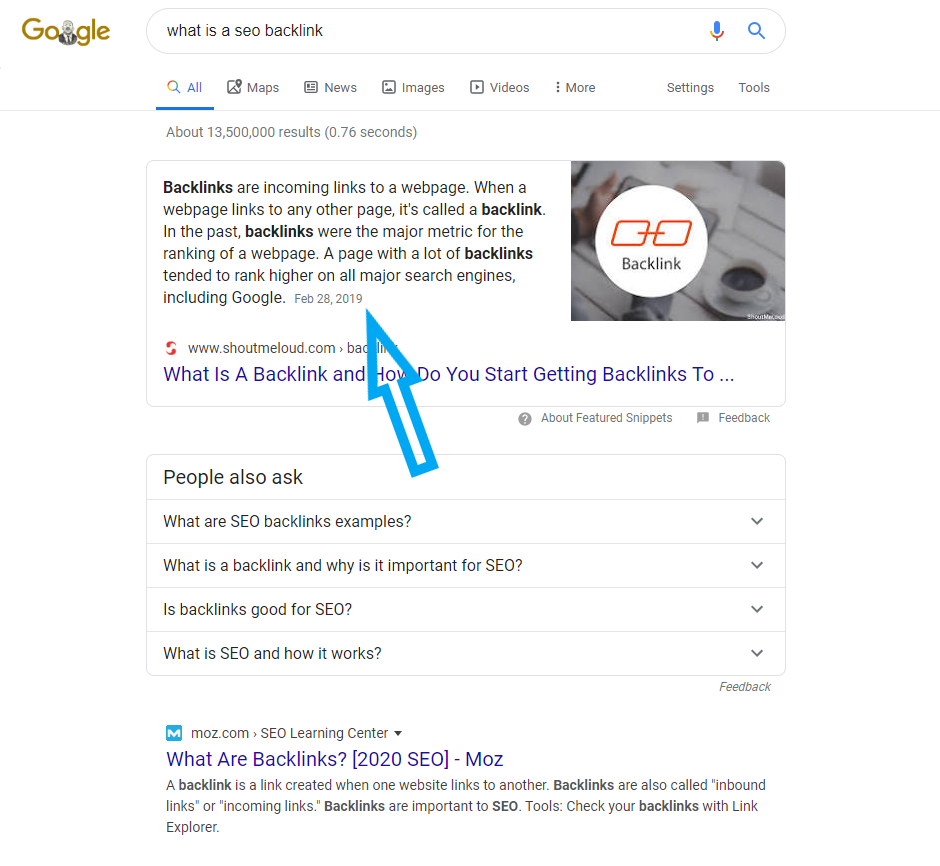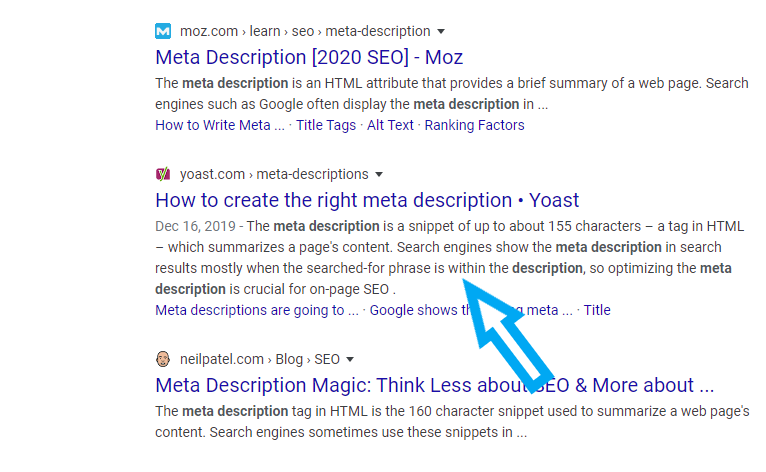How To Grow Your Business (& Beat Your Competitors) With The Latest SEO Best Practices For 2020
A riddle for you. What is something that everyone wants, many people say they have it, but no one truly knows how to do it exactly right?
SEO of course!
We all turn to Google for nearly everything, so naturally every business and brand is completing to be found in our searches. This requires effort, consistency and research. You need to make sure you’re always doing everything you can to meet Google’s requirements or else you’ll fall behind the pack. This means always incorporating SEO best practices.
Here are the SEO Best Practices for 2020 you need to be doing (or continue to keep doing)!
SEO Best Practices 2020: Invest Time and Energy into Your Backlinks
Think of backlinks like networking. When trying to network your way into an industry or certain group of people, there is no better way than with an introduction by someone that is already respected by the group. That person vouching for you is no different than a valuable website linking to you. In this scenario, Google is the group of people and the backlink is the person saying, “this guy or gal is legit.”
There was a time when the school of thought was to simply build quality content and websites will link to you. A “if you build it, they will come” type of approach. But the game has changed (as it always does). Backlinks are more sacred and it’s more competitive than ever to obtain good ones.
We recommend finding well-ranking websites that relate to your industry and have a blog. Typically, if you have a blog, you’re always open to more good content. Simply contact websites that fit that criteria and offer some interesting blog ideas. The blog ideas should fit their industry and relate back to what you do in some form. Your blog could already be written or just a well-developed idea. Make sure it’s original content and to mention that in your pitch.
The final tip is to make sure you include the link back to your website in the guest blog post, or else this was for nothing. You’d be surprised how open other websites are to accepting good content and allowing the backlink to take place.
SEO Best Practices 2020: Write and Optimize for Featured Snippets
Why rank #1 when you can rank for “position 0?” Position 0 is a nickname for the featured snippet section. A featured snippet is a snippet of content that is prominently displayed at the top of a search results. It usually answers a question, explains how to do something or offers some other type of short-form information (see example below).

So, how do you rank for a featured snippet? Just like SEO in general, there is no exact science to it but here are a couple tips that’ll give you a shot.
- Give the info people want – Sounds simple but it takes some research. Tools like Moz, SEMRush and Answer the Public will provide keyword phrases that people are looking for. This will give you some good content ideas to focus your featured snippet around. Also, it’s not a bad idea to use your general knowledge to come up with questions your audience wants to know the answer to. You’re living in your industry, so you don’t always need to rely on analytics to try new phrases/questions.
- Deliver everything in one section – Keep in mind that these snippets are meant to effectively answer a question in a relatively small space. So, you want to be concise. You should structure the section of content that you want to rank as a featured snippet like this: Your target keyword phrase/question in a header (H2 tag) and then content that provides the full answer/info concisely (ideally around 50 words).
SEO Best Practices 2020: Get an SSL Certificate
There are many benefits to securing your website with an SSL certificate. One of the more appealing benefits is that it gives a boost to your SEO. Google made it public that they value SSL/HTTPS years ago. In addition to SEO, you’re also likely to improve engagement and conversions when your URL doesn’t read “Not secure.” Not exactly welcoming. The improvement in engagement should lead to an improvement in ranking as well.
Getting an SSL certificate is a fairly easy process with many reputable websites that offer a variety of options.
SEO Best Practices 2020: Consider Voice Search When Structuring Content
Led by devices such as Alexa and Google Assistant, voice search is consistently growing in popularity and there is no reason to think it’ll slow down. With this growth, you must consider how this will affect your SEO strategy. One of the main ways voice search affects SEO is with the search terms people use when speaking.
Search terms are more conversational when coming from a voice search. For example, a keyword phrase you might optimize a piece content with could be “Best Food Brands for Cats.” This blog title could work, and make sense based off keyword research, but it might not be something someone would say during a voice search. A voice search might sound more like “What are the best brands of food for a cat.”
The titles are similar but might produce very different results. It’s worth creating two variations of the same article with one optimized for text search and one for voice search. You could consider doing a single “voice search” article for every three or four “text search” articles.
SEO Best Practices 2020: Invest in Quality
You hear it all the time: you need to have quality content. There is no denying that the more users find your content helpful and engaging, the more your ranking will rise. Well, what is quality content and how to achieve it? We put together a couple key areas to focus on.
- Flow – You want to avoid choppy, unnatural paragraphs. Make sure your content flows with logical transitions that progress your points.
- Give Them What They Want – Sometimes we focus too much on being creative and fun, and we miss the point of our SEO content. If users land on your page because they searched for something, make sure it’s easy for them to find the info they are seeking. Use headers and bullet points to make content easier to skim.
If you nail those two tips, you’re usually on the right track with your content. If you don’t consider yourself a writer and aren’t interested in investing the time to provide “quality,” you can also invest in a talented writer to produce quality content for you. Outsourcing can get expensive and freelance work can lead to uninspired results. Sometimes it’s best to invest in a full-time writer to really nail your strategy.
SEO Best Practices 2020: Incorporate Videos
According to a Convince & Convert report, adding a video to your website increases the chance of a front-page Google ranking by 53x. With statistics like this, it’s easy to see why so many invest in video. When you do decide to add videos to your SEO strategy, there are a few key techniques you need to be aware of.
- Submit a video transcript when uploading. The text makes the video more indexable.
- Just like a blog post, make sure your title includes a focus keyword phrase and has a hook.
- Include the video on a page or blog post that is fully optimized for the same keywords as the video.
SEO Best Practices 2020: Don’t Forget About the Fundamentals
What’s the fundamentals? Basic on-page keyword placement. Yes, despite the growing power of semantic search, this still is a best practice. You want to place your focus keyword phrase in your page title, subheaders (h2 tags), URL and throughout your content. The keyword should organically fit into the story your telling and not be forced (quality over frequency). You’ll also want to make sure to place your focus keyword phrase in the alt text of your featured image.
SEO Best Practices 2020: Use Meta Descriptions as Your Hook
There was once a time when putting your focus keyword phrase in the meta description of your page was a must and influenced your search ranking. That’s not the case anymore, but they still matter. Meta descriptions are often used as a snippet in your search engine page results.

Therefore, it’s important to use your meta description to hook users into wanting to read your post and clicking through. Here are a few tips on delivering an effective meta description:
- Keep your meta description right around 155 characters.
- Use a stat, interesting fact or bold statement to intrigue users to click.
- While it needs to hook users, make sure the content still relates to your post. No false promises.
SEO Best Practices 2020: Ensure Your Loading Speed is On Point
What’s more frustrating than a website that is slow to load in 2020? Not much, and Google seems to agree with this sentiment as page loading speed is a ranking factor. Based off the fact that Google released their own page speed assistance software called PageSpeed Insights, it’s clearly important. PageSpeed Insights is described as a tool that “analyzes the content of a web page, then generates suggestions to make that page faster.”
If you don’t find PageSpeed Insights helpful, there are plenty of other online tools that can help with your page loading time.
SEO Best Practices 2020: Always Cross Reference Your Keyword Research
When researching anything in life, you typically don’t want to rely on one source. Keyword research is no different. There are plenty of effective keyword tools that can help give you a well-rounded perspective. Some of the most popular include:
- Google Keyword Planner
- Moz
- SEMrush
- Answer The Public
- Ahrefs
Each tool brings something a little different to your research.
The Keyword Planner is helpful when you’re coordinating your organic SEO efforts with your paid. Moz offers a function that allows you to see what keywords other websites are ranking for, which many marketers find useful. Answer The Public provides visual insights that will help you develop the voice of your piece.
Using different combinations of these tools will allow you to create the best SEO content.
SEO Best Practices 2020: Use Social Influencers
A marketing trend continuing to grow in popularity is the utilization of social influencers. It’s not farfetched to say that these people are the celebrities of the internet. Trends, viral sensations, brand value and much more begin and go through social influencers. They are gate keepers in some ways. While their marketing value is clear, you might ask how they relate to SEO.
It is similar to what we discussed in the backlink section. With SEO, you want to create an ecosystem of links and good content. A social influencer can give you a wealth of both in one marketing campaign. If an influencer mentions you in a YouTube video, tweet, Instagram post and so on, that will expand your digital ecosystem immensely. This strategy is especially useful when you partner with an influencer whose audience overlaps with yours.
Well, there you have it, your SEO best practices for 2020 and beyond! If you follow these guidelines, you are sure to see an increase in rankings!





